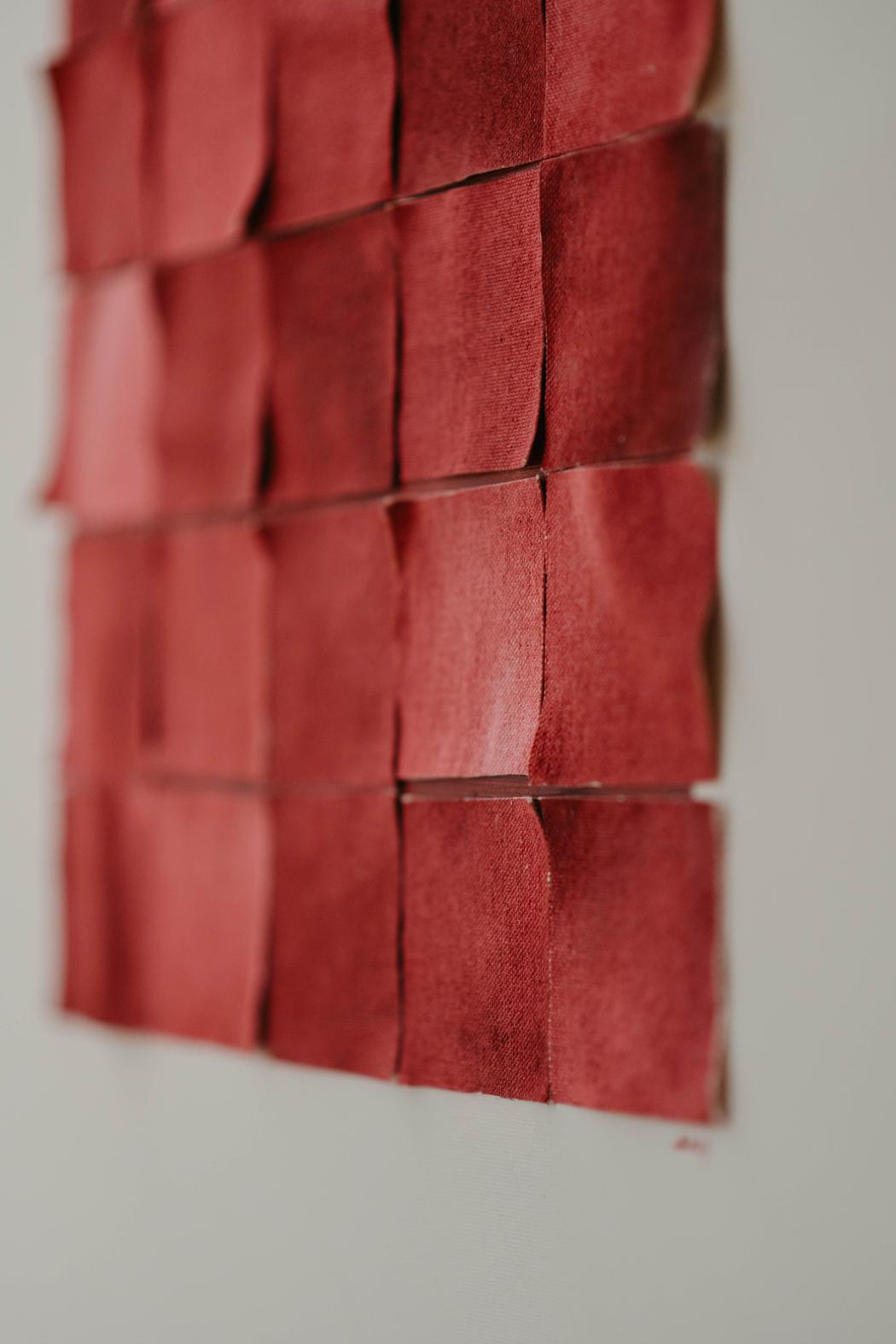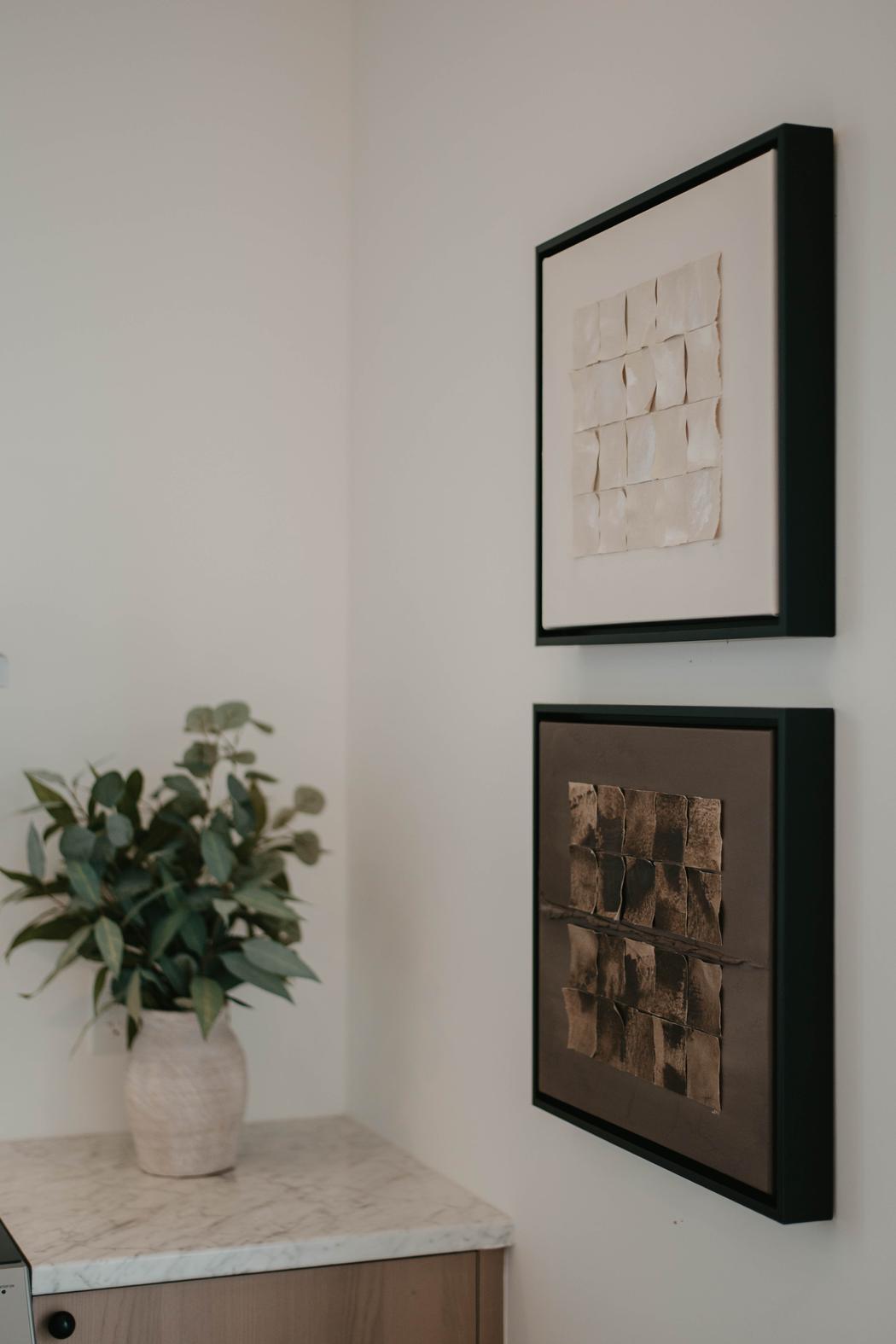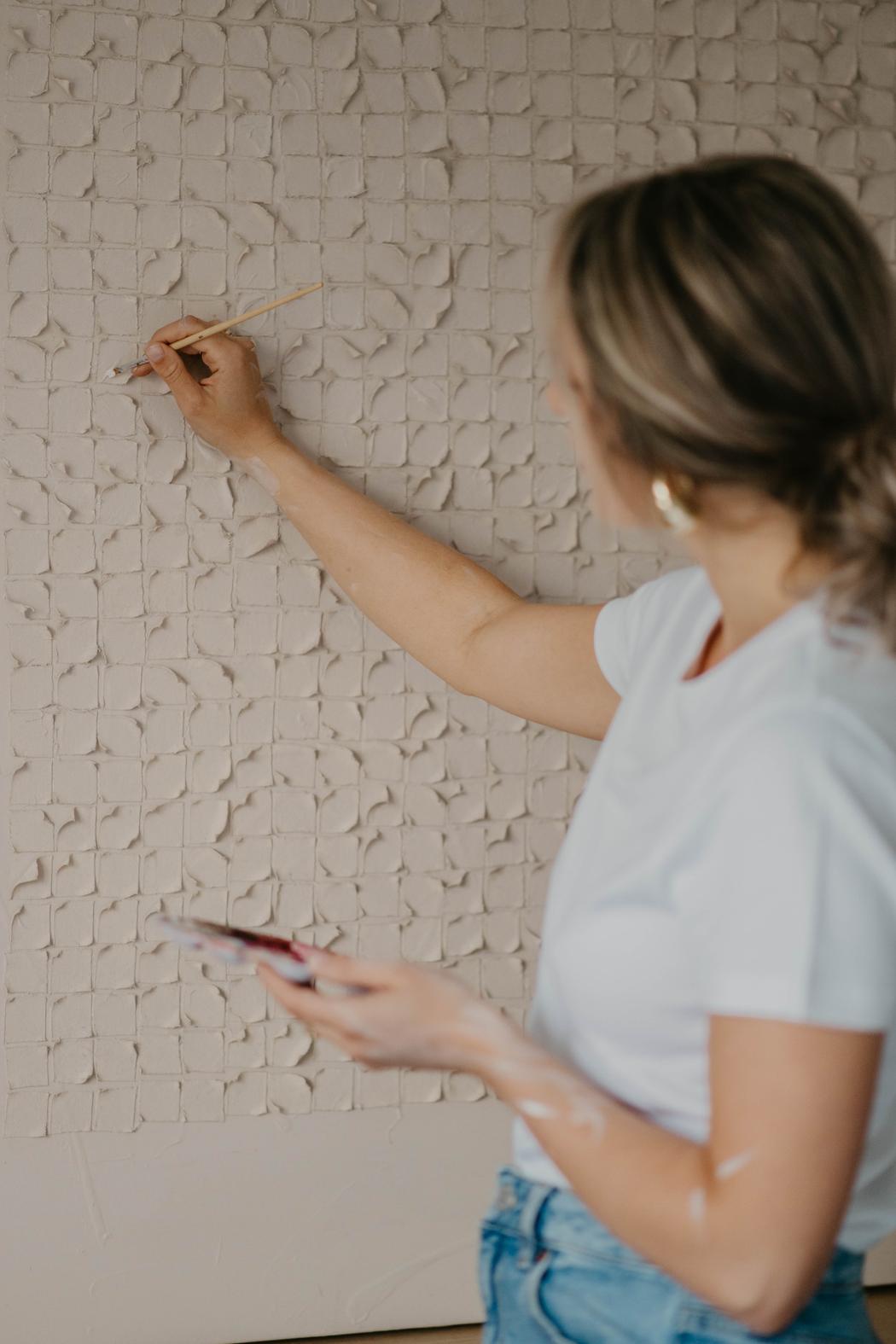SALY
Can you tell us about the first time you felt that painting was more than just an experiment, but truly your personal path of self-discovery?
I grew up surrounded by creativity. My cousin, Valerie Mandia, is a painter, and her studio was where I first discovered the joy of exploring color and form. Those early moments were playful and intuitive, filled with experiments that felt more like discovery than creation. My family always encouraged curiosity and valued having passions, so art was something I was gently guided to nurture rather than pursue with pressure.
It wasn’t until my early teens that painting began to feel like something deeper. I remember losing track of time while blending colors and shapes, painting not for a finished result but for the pure joy of being present. That’s when I realized painting wasn’t just an activity, I realized painting was natural for me, kind of a natural extension of myself that didn’t require overthinking. As I grew older, my style began to evolve with me, shaped by travel experience, encounters, and personal growth. Painting became a quiet dialogue with myself, a way to understand and express what words often can’t. It continues to be my path of self-discovery, a mirror that reflects who I am and who I’m becoming.

How did your early experiences in your cousin Valerie’s studio shape your relationship with art?
My early experiences in Valerie’s studio deeply shaped how I approach painting today. I remember watching her move with effortless freedom, blending colors and textures as if speaking a secret language. She would hand me brushes, scraps of canvas, or unexpected materials like fabric, sand, even coffee grounds, and simply say, “try.” Those hours of open exploration taught me that art isn’t about perfection, it’s really about discovery. Valerie showed me the alchemy of layering, how a canvas evolves through patient additions and subtle changes. She encouraged me to go beyond the flatness of a surface, to embrace materials, and to see potential in what feels unfinished.
At the time, I didn’t realize how formative those moments were, but they shaped my belief that art is a process of uncovering. I learned to trust intuition, to erase and begin again, and to recognize when a piece feels complete. This freedom to explore without boundaries continues to define my relationship with art, guiding my practice as one of constant discovery and evolution.

Your works often unfold slowly and reveal hidden nuances over time. How do you balance spontaneity and control in your process?
The balance between spontaneity and control in my work reflects how I approach life itself. Each piece begins with preparation, my technique requires a certain structure, careful cuts, and precise measurements. Once the elements are in place, I allow spontaneity to take over. As I assemble and layer, I respond intuitively to the materials and forms. Then I step back to refine, applying control where needed to create harmony. I never aim for perfection; I aim for a balance between what emerges naturally and what I intentionally want to preserve.
You use unconventional materials and layering techniques. What draws you to experiment with these approaches?
My cousin encouraged me early on to explore different materials and techniques, so experimentation has always been part of my artistic journey. Over the years, I’ve explored many mediums, but I’ve been most drawn to those that allow texture and depth to emerge naturally. The layering process, for me, mirrors the way experiences accumulate in life, nothing truly disappears; it simply transforms. Experimentation keeps me curious, pushes me beyond predictability, and helps me find beauty in imperfection. Through layering, I build depth not only in form but also in meaning, creating works that slowly reveal themselves over time.

Impermanence and transition seem central to your practice. What do these concepts mean to you personally?
The concept of impermanence and transition is reflected in how I explore perception through my art, no matter where you stand in front of a piece, you’ll see it differently. My work seeks to capture that quiet, in-between space before something changes. In many of my paintings, it feels as if the pieces could drift away with the wind. Transition, for me, is where meaning lives: in the movement, not the destination.

Do you consider your work more minimalist or more emotional—and how do you see the interplay between those qualities?
I don’t view my work as purely minimalist or emotional—it combines both. My minimalist approach uses clean lines, simple compositions, and muted tones to create a structured, uncluttered surface. This simplicity acts as a framework that highlights emotional depth, expressed through layered textures like ash or torn fabric and raw materials that carry a tactile energy. The interplay allows subtle emotions to emerge gradually, encouraging viewers to linger, reflect, and find personal meaning in the work’s evolving details over time.

How do you want audiences to feel when they stand in front of your work?
I want viewers to feel calm and curious when they engage with my work. My pieces aren’t meant to shout; they whisper. I want viewers to linger long enough to notice the shifts, the textures, the hidden layers and maybe recognize something of themselves in that stillness. My paintings, with their layered textures like ash or torn fabric and subtle details, encourage people to slow down, reflect, and connect personally with the work’s quiet presence, discovering nuances that unfold over time.


Leave a Reply